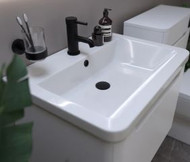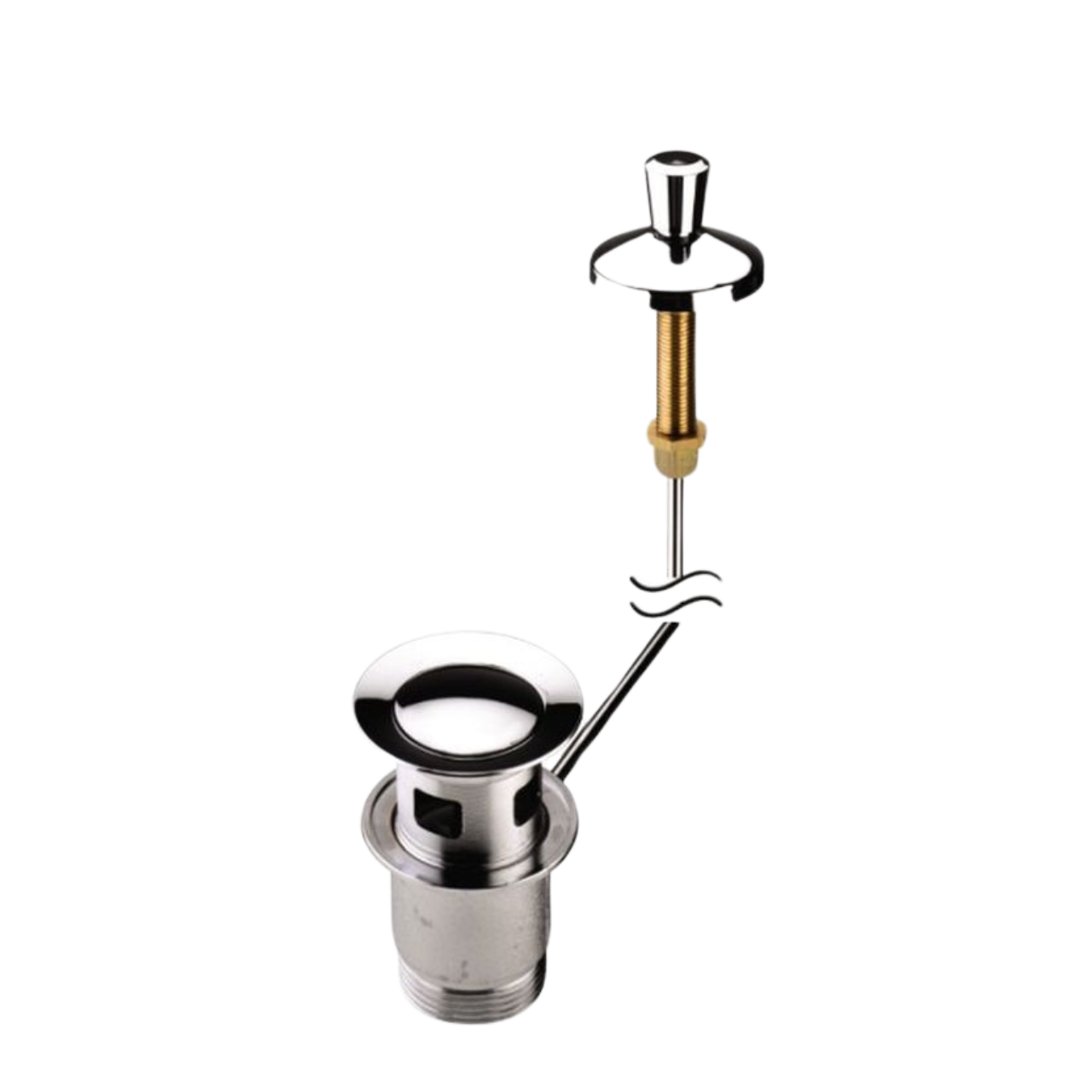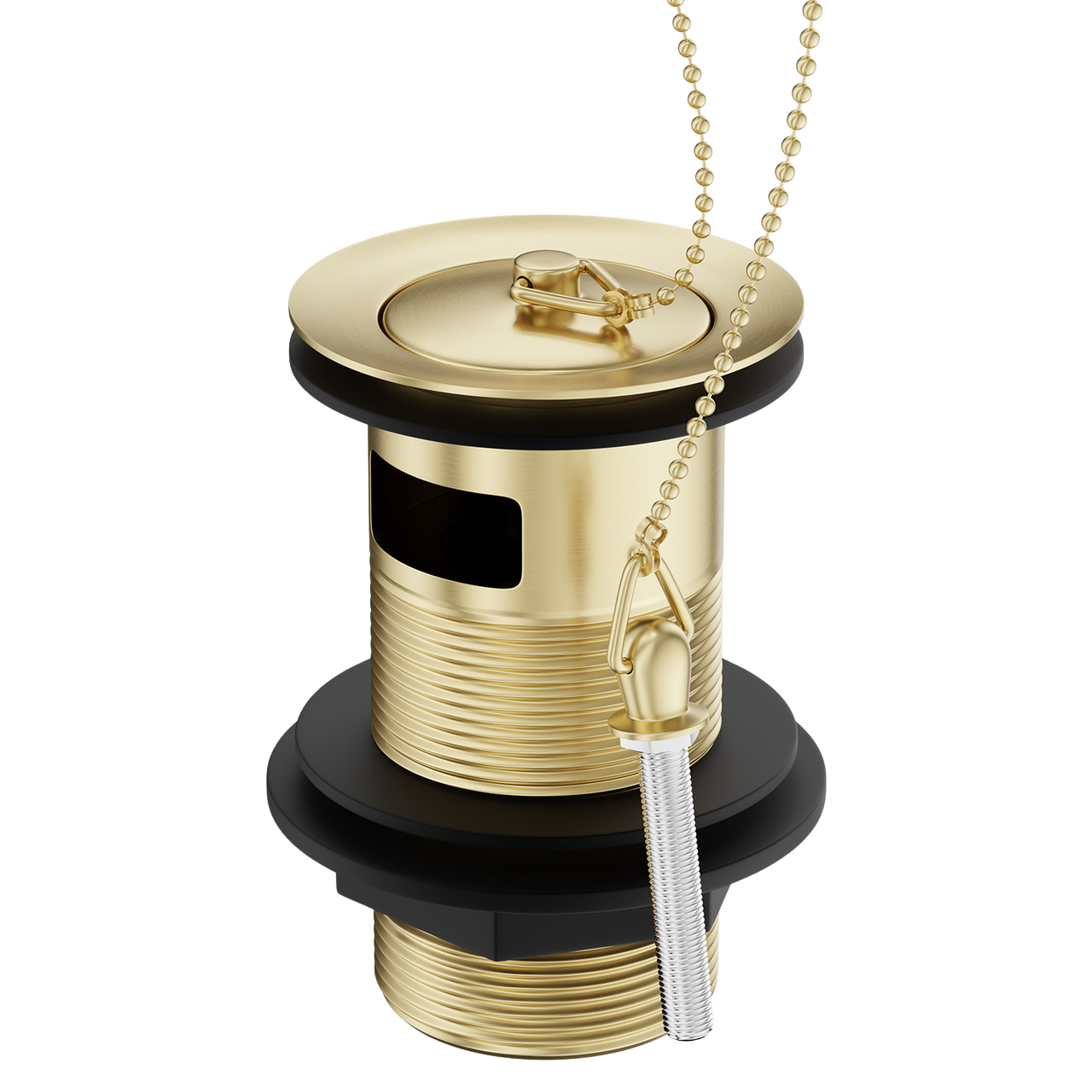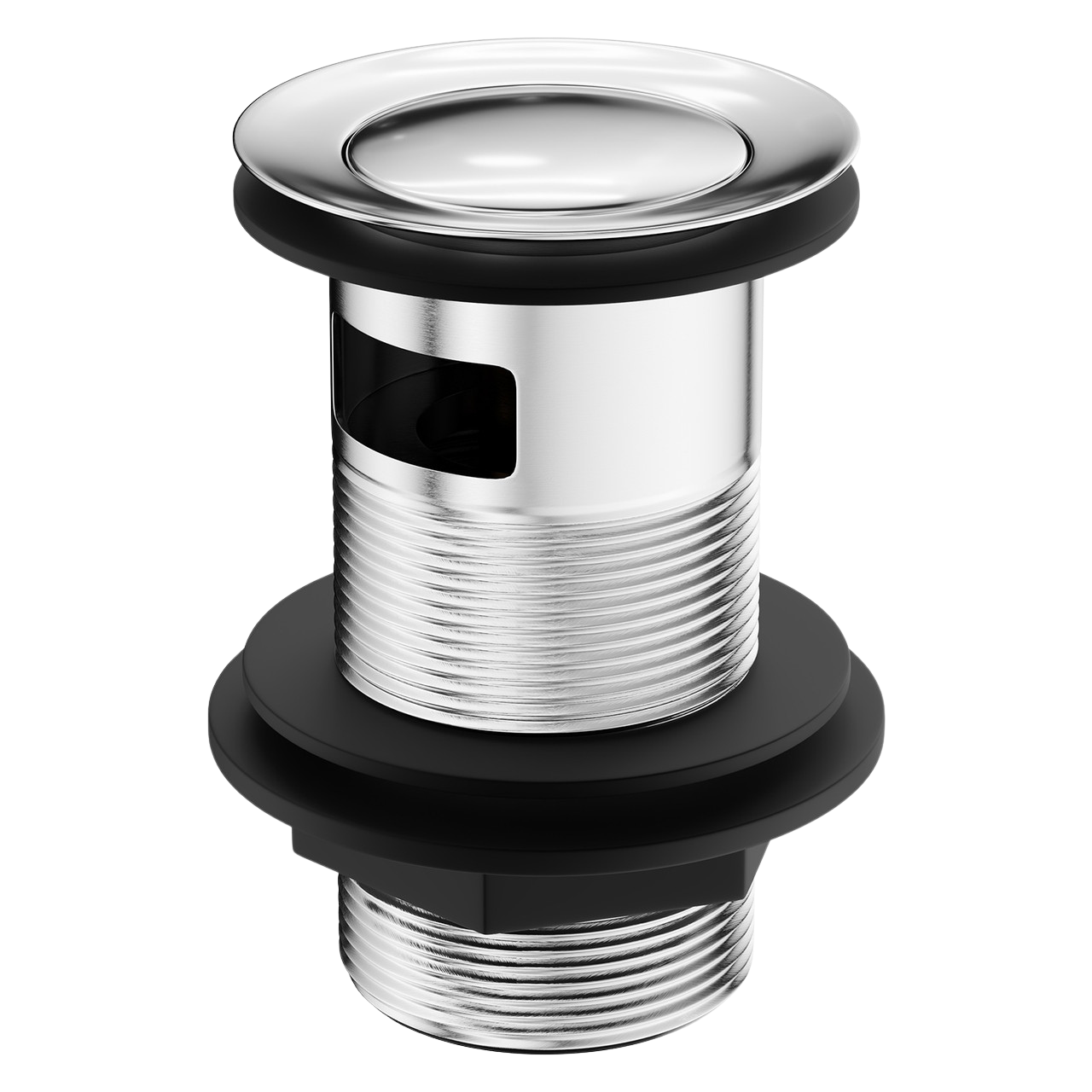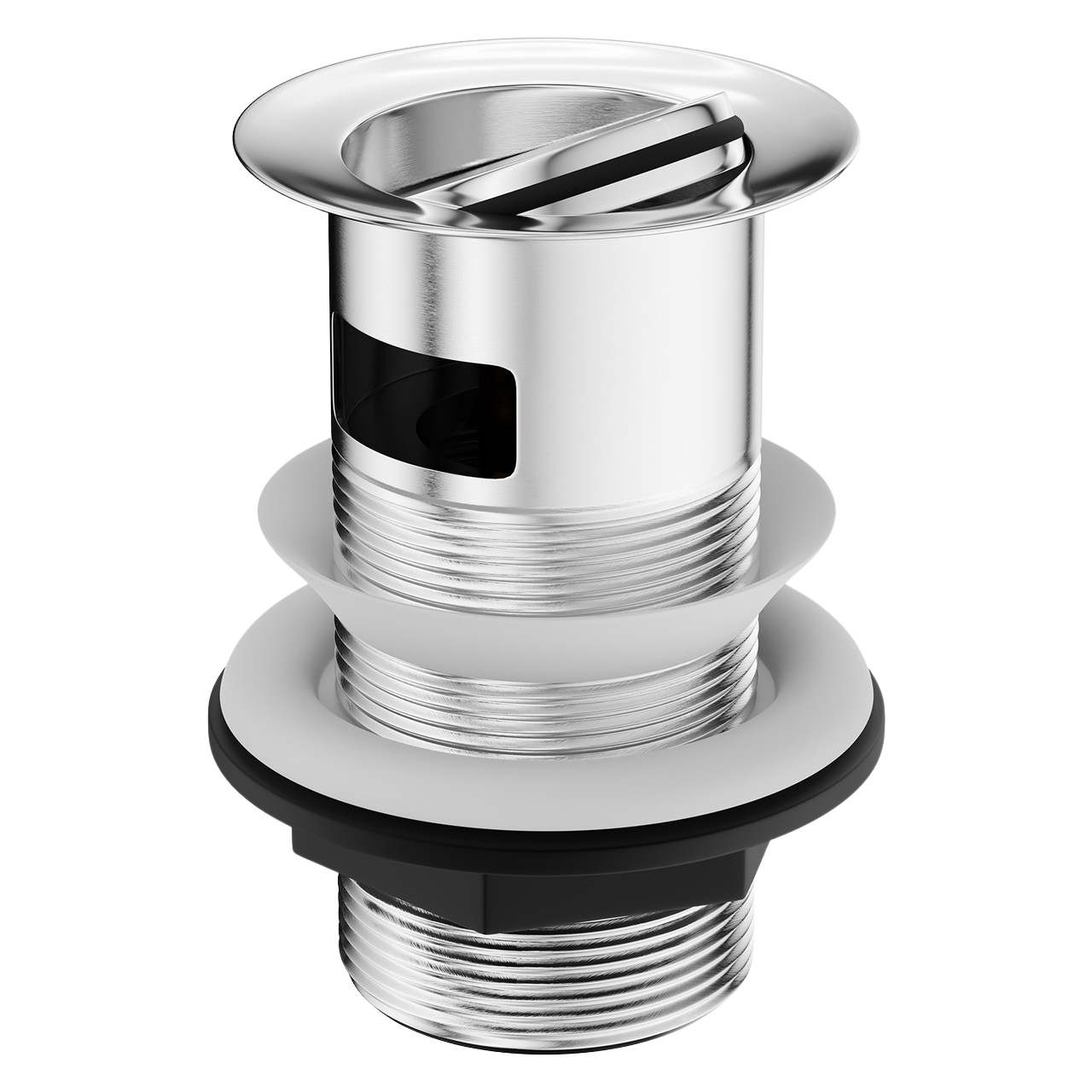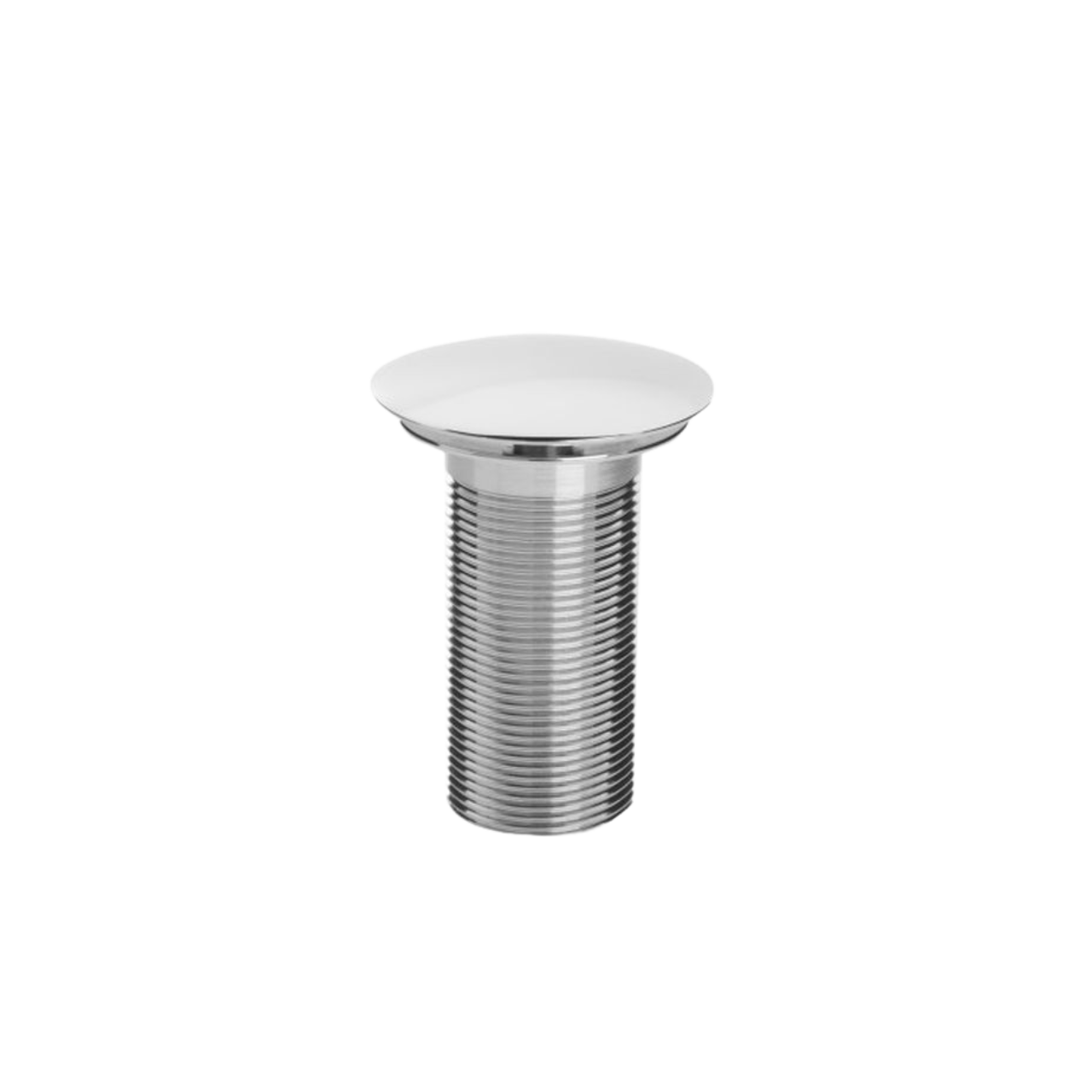How to Choose the Perfect Basin Waste for Your Bathroom
21st Aug 2024
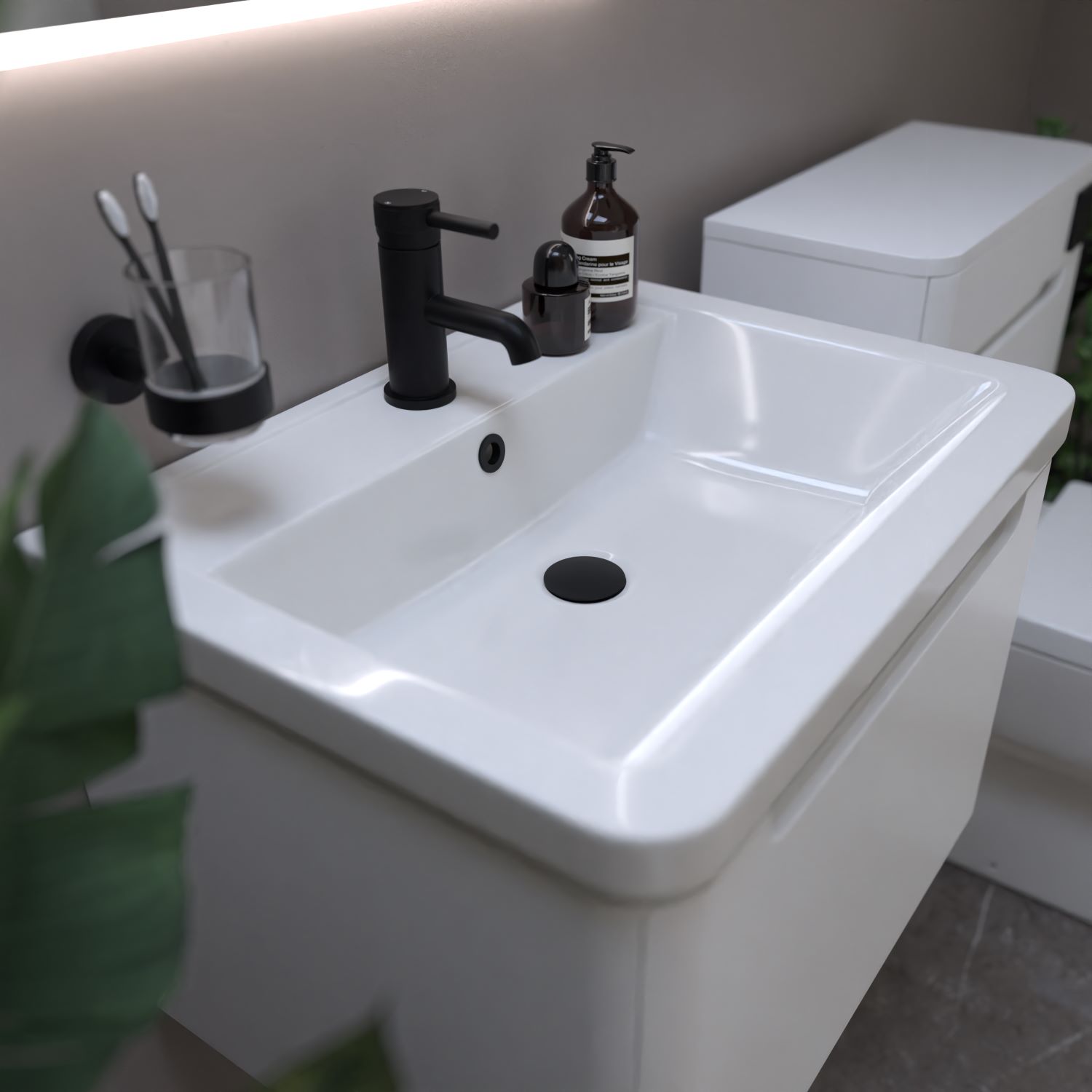
Whether you're washing your hands or brushing your teeth, a slow-draining sink can be a pain. That's why finding the right basin waste is important to ensure your sink drains quickly and efficiently.
While your basin plughole may not often be at the front of your mind when you think about renovating your bathroom, there is a wide range of basin waste options available to help you enhance your bathroom's appearance and functionality.
In this guide, we'll walk you through everything there is to know about basin wastes, with expert insights from Brian Toward, Chief Executive Officer (CEO) at Wholesale Domestic.
Contents
- What is a basin waste?
- What are the benefits of a basin waste?
- What is the difference between a slotted and unslotted basin waste?
- Types of basin waste
- What to consider when buying a basin waste
- What size basin waste do I need?
- Frequently asked questions
What is a basin waste?
A basin waste, also known as a sink waste or plug, is a vital component of your bathroom sink that connects the basin to the plumbing system, allowing water to drain away efficiently. It also prevents debris from entering the pipes, which helps you avoid clogs and maintain a hygienic environment in your sink.
What are the benefits of a basin waste?
A drain waste is more than just a way to keep water in or out of your basin. There are a wide range of benefits to installing these handy devices, some of which include:
- Preventing blockages – Basin wastes keep debris, such as hair, dust, and dirt, out of your pipes – which prevents them from becoming stuck in the plumbing and causing blockages.
- Improving hygiene – A basin waste helps you maintain a clean and sanitary sink that’s free from clogs. This prevents any unpleasant smells from the plumbing escaping into your bathroom.
- Enhancing functionality – Basin wastes ensure efficient drainage and prevent water overflow.
- Aesthetic appeal – The right basin waste can complement the design of your bathroom, with various styles, colours, and finishes available.
What is the difference between a slotted and unslotted basin waste?
Knowing the difference between slotted and unslotted basin wastes is crucial for selecting the right one for your sink.
What is a slotted basin waste?
A slotted basin waste features one or more slots on its side, which align with the basin's overflow hole. This design allows excess water to flow from the overflow into the waste. The overflow is a small hole below the top of the basin, under the taps, which allows water to run out if the sink gets too full.
A slotted basin waste is necessary for sinks with an overflow to prevent water from spilling over the edge when the plughole is closed.
What is an unslotted basin waste?
An unslotted basin waste does not have a slot and is used in basins without an overflow. This type is popular for its easy maintenance and clean aesthetic.
However, because this model has no slot in the waste pipe, you cannot use an unslotted basin waste with an overflow. Water from the overflow will not be able to escape when the plug is closed, leading to a spillage.
Types of basin waste
Each specific type of basin waste has its own benefits and features. Selecting the right option enhances both the functionality and appearance of your bathroom.
Here are the most common types:
1. Pop-up waste
A pop-up basin waste is a type of slotted waste that operates via a lever or knob mounted elsewhere on the basin or surrounding countertop. This allows you to open and close the waste easily. This sleek and convenient solution is perfect for any modern bathroom, making it quick and straightforward to control your water flow.
Brian says: "Pop-up wastes are super convenient and give a sleek, modern look, which is why many people like them. Plus, you don't have to touch the plug!"
If your basin has an overflow, a pop-up waste is an excellent choice for a minimalist style.
2. Plug-and-chain waste
The traditional plug-and-chain waste features a plug connected to a chain. This provides a simple yet effective way to control drainage. This type of waste is extremely common in older homes and can be found worldwide.
A plug-and-chain waste combines reliability and simplicity and offers the ultimate solution for any bathroom. The plug is often detachable and can be easily replaced if it wears out.
These wastes feature a slot, which makes them compatible with many basin types. If your bathroom has a full or semi-pedestal sink, washstand basin, or any traditional basin style, a plug and chain waste can enhance the overall look and add to the nostalgic, vintage feel.
"Plug and chain wastes are a simple and effective way to control water in your bathroom sink," says Brian. "They're a popular choice because they're simple to use, and you can easily replace the plug when it wears out."
3. Click-clack waste
A click-clack waste, also known as a push button or sprung plug, operates by the user pressing down on the waste to open or close it. Due to its simplistic nature, this type is perfect for contemporary bathrooms.
"Unlike most waste types, a click-clack works with basins with or without an overflow," says Brian.
"If your bathroom has a semi-recessed or inset basin, a click-clack waste offers a great way to manage your water flow without detracting from your overall design. The push-button mechanism ensures that the waste remains securely closed when needed and opens easily with a single press."
4. Flip-top waste
A flip-top waste features a rotating plug that can be flipped to open or close. This waste type works well in any bathroom setting and offers an easy-to-maintain solution with no complicated mechanisms. These wastes feature a revolving stopper, which, when laid flat, acts as a plug. To close, rotate the stopper 180 degrees counterclockwise so that it sits flush in the bottom of the basin. Or, to drain, rotate it 180 degrees clockwise to create an opening for the water to escape.
Flip-top wastes are easy to use and practical, making them an excellent choice for homes with young children or older residents. They provide a simplistic, contemporary look and are compatible with basins that have an overflow feature or don't.
These wastes are especially complementary to modern basin styles, such as under-counter basins and wall-hung units. Plus, the rotating plug is also durable and easy to clean, ensuring long-term usability.
Brian says: "Flip-top wastes are incredibly user-friendly, making them a great choice for busy households."
"They have the perfect combination of practicality and style, meaning they don't draw any attention away from the remainder of the bathroom."
5. Free-flow waste
A free-flow waste has no closing mechanism and allows continuous water drainage, making it ideal for basins without an overflow. This type is especially useful for countertop sinks and some semi-recessed basins that prioritise constant drainage due to their smaller bowls.
Brian says, "Free-flow wastes are great for busy areas like public bathrooms or family homes and are ideal for basins without an overflow. The design is simple and effective, preventing sinks from overflowing if taps are left running, which is handy in public bathrooms or with young kids."
"But keep in mind, these wastes also mean that a basin cannot be used to hold water for washing your face, as water drains away instantly."
What to consider when buying a basin waste
1. Basin type
When choosing a basin waste, the sink you have significantly influences the type of waste you need. Basins come in various styles, such as countertop, wall-hung, and pedestal sinks – each requiring different waste types to function correctly.
For instance, basins with an overflow hole need a slotted waste to prevent water from spilling over. In contrast, basins without an overflow require an unslotted waste to ensure a proper seal and drainage.
Countertop and vessel sinks often lack overflow holes and work best with free-flow or click-clack wastes.
In contrast, pedestal and wall-hung basins, which usually include an overflow, are most compatible with pop-up, flip-top, or plug-and-chain wastes.
Brian adds: "It's really important to check your basin type before buying a waste, as it ensures good drainage and prevents water damage. This simple step can save you from compatibility issues later."
2. Your bathroom style
Brian says: "Choosing the right finish for your basin waste can change the overall look of your bathroom. That's why you should consider your colour scheme and the existing fixtures before you buy one."
Basin wastes are available in various finishes, such as chrome, brushed nickel, matt black, and brass.
Chrome finishes are versatile and match well with most modern bathroom fixtures, providing a sleek and polished look. Brushed nickel offers a more subdued, contemporary appeal, while matt black is perfect for a bold, modern statement. Brass finishes bring a warm, classic touch, which is ideal for traditional or vintage-style bathrooms. There are plenty of options to pick from!
What size basin waste do I need?
"The waste size you'll need depends on the diameter of the hole in your basin, typically 32mm or 40mm," says Brian.
"Choosing the right size basin waste is crucial to ensure you have a proper fit that drains correctly. If you install the wrong size, it might leak and cause mould or water damage. Plus, an incorrect fit could make the water drain slowly."
How to measure basin waste size
Follow these simple steps to accurately measure your basin waste size:
- Measure the diameter – Use a tape measure or calliper to measure the diameter of the waste hole in your basin. Place the device across the widest part of the waste hole at the bottom of the basin and record the measurement.
- Measure the thickness – Next, you'll need to measure the thickness of your basin at the waste hole. To do this, take your measuring tape and align it from the top edge of the basin to the bottom edge around the waste hole. Note the thickness in millimetres. This ensures the waste fitting can accommodate the basin's depth.
- Record the measurements – Write down both of these measurements to ensure you choose a compatible basin waste.
Frequently asked questions
How do I remove a sink plug?
The process for removing a sink plug can vary depending on the type.
Brian explains: "For a traditional plug-and-chain waste, simply lift the plug away from the drain and place it on the edge of the sink."
"If your bathroom has a pop-up or click-clack waste, you might need to twist or pull it out. If the stopper feels stuck, try gently lifting and wiggling it to release it."
How do I fit a basin waste?
Fitting a basin waste is a simple task with the right tools. Here’s a step-by-step guide:
- First, ensure you have plumber's putty, a wrench, and the waste kit to hand.
- Clean the basin hole with a standard cleaning spray and cloth and let it dry.
- Then, apply a ring of plumber's putty around the hole (the part that sits inside the basin).
- Insert the waste through the hole, ensuring that any slots align with the overflow if applicable, and ensure the putty forms a watertight seal.
- Underneath the basin, screw on the washer and nut tightly to secure the waste
- Connect the waste pipe to the plumbing.
- Finally, remove any excess plumber's putty and check for leaks by running a small amount of water into the basin.
How do I clean a bathroom sink plughole?
Keeping your sink plughole clean helps maintain a hygienic bathroom and prevents any unpleasant smells from building up in and around the drain.
Here’s how to give your plughole a deep clean:
- Start by removing visible debris using a damp cloth.
- Then, use a mixture of baking soda and vinegar to tackle grime. Pour half a cup of baking soda into the plug hole, followed by half a cup of vinegar.
- Let it fizz for a few minutes.
- Rinse with hot water.
Brian explains how this works: "This fizzing action is the chemical reaction between the baking soda and vinegar, which helps to break down and dislodge grime and debris. The bubbles created during this reaction can reach into small crevices and hard-to-reach areas, effectively cleaning the plughole."
For any tougher clogs, you can use a sink plunger or a drain snake to remove any blockages. Here’s how:
- Start by partially filling the sink with water to cover the plunger's suction cup.
- Place the plunger over the plughole and pump it up and down vigorously to create suction and pressure that can dislodge the blockage.
- If the clog persists, you can insert a drain snake into the plughole and turn the handle to feed it through the drain.
- When you feel resistance, rotate the snake to break up the clog and then pull it out.
- Repeat this process as necessary until the drain is clear.
To learn more, read our guide to deep cleaning your bathroom.
Find your new basin waste at Wholesale Domestic
Now that we've covered the various types of basin waste available, it's time to find the perfect solution for your bathroom. At Wholesale Domestic, we offer a wide range of basin wastes to suit every style and need.
If you're giving your bathroom a makeover, you'll need a new basin to match the new décor. We offer a broad selection of modern and traditional basins, alongside a range of basin taps for every home. You can also accessorise your new sink with a soap dispenser and towel rail.
If you're still debating which style to choose, get in touch with a member of the Wholesale Domestic team. We'll be more than happy to help you out. Or, if you’re looking for more advice on improving your bathroom, check out our blog.

 FREE delivery over £500*
FREE delivery over £500* Visit our showrooms
Visit our showrooms Finance options available*
Finance options available* Apply for a Trade Account
Apply for a Trade Account